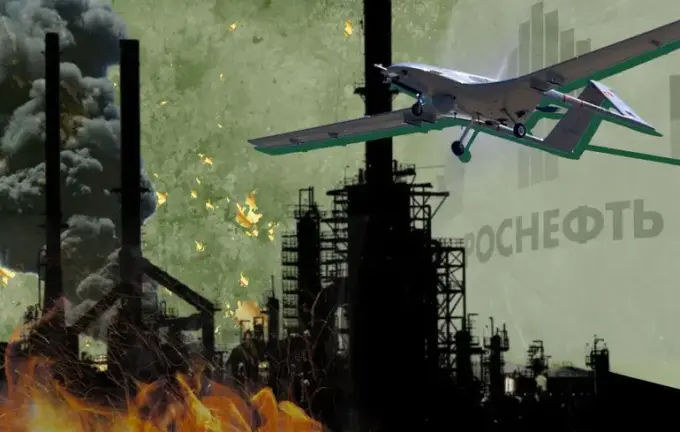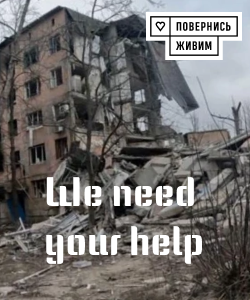From Feodosia to Ufa: The Strategic Effectiveness of Ukrainian Strikes on Russian Oil Refineries

Since the summer of 2025, Ukraine has actively launched a comprehensive campaign targeting critical components of Russia’s oil infrastructure, notably refineries and oil terminals deep in the enemy’s territory.
These actions have already significantly altered Russia’s energy and financial landscape, previously considered stable.
Initially, these attacks appeared mostly symbolic, serving as demonstrations of capability and psychological pressure.
However, today they have evolved into a systematic strategic operation aimed at dismantling the core of Russia’s oil refining industry, resulting in long-lasting damages and severe economic disruptions.
Over the past week, Ukrainian drones struck several targets in Feodosia and Ufa, with the most notable being the attack on October 13 on the largest oil terminal in Crimea, causing multiple tanks to catch fire.
Similar attacks in early October already resulted in large fires and satellite imagery shows smoke plumes stretching up to 12 kilometers.
The strike on the Bashkortostan refinery in Ufa on October 11 caused explosions and a major fire at one of Russia’s largest refineries, “Bashneft-UNPZ.” These operations vividly demonstrate Ukraine’s ability to reach deep into Russian territory and target critical strategic sites, delivering both economic and psychological blows.
As a result, Russian forces are compelled to allocate substantial resources not only to defend vital infrastructure but also to mitigate damages, deepening their crisis.
Analytical agencies, including BBC Verify, Financial Times, and Russian outlets like Syal, estimate that over a third of Russia’s refining capacity is currently idle or severely disrupted, amounting to roughly 2 million barrels of crude oil processed daily — nearly 40% of the pre-war capacity, which no longer produces gasoline, diesel, or jet fuel.
Since the beginning of this year, at least 21 out of 38 major Russian refineries have been hit, with some targeted multiple times.
Significant facilities, such as the Kinef in Kiriishi, Ryazan, Noyabrisk, Astrakhan, and Orsk, are either stopped or under partial repair.
To grasp the scale, Russia produced about 9.2 million barrels of crude daily in June 2025, with exports of refined products totaling roughly 2.55 million barrels per day and about 3 million barrels remaining at home.
During that period, export revenues from oil and petroleum products averaged around 640–650 million dollars per day.
Even a partial loss of refining capacity creates a critical internal deficit and severely impacts export earnings.
Ukrainian strikes are forcing Russia to sell more crude oil directly, as their refining industry is effectively crippled.
The effects are threefold: tactical, economic, and political.
Tactically, Ukrainian drones are increasingly hitting targets deep inside Russia, with a record attack on Tumen, over 2000 km from the front lines, illustrating the vulnerability of even remote regions and shattering the illusion of invincibility for the Kremlin.
Economically, this leads to substantial disruptions in the fuel market.
Bloomberg estimates that gasoline shortages are nearing 20% of domestic demand, with production falling by one million tons in September alone, and diesel shortages more acute.
Fuel prices have soared — up to 40% in wholesale and 20–30% at retail — despite government efforts to freeze prices.
Long queues at gas stations in Siberia, the Far East, Crimea, and Central Russia are now common, with many independent gas stations closing due to unprofitability.
If Ukraine’s strike campaign continues with the current intensity and precision, the economic repercussions for Russia will become critical.
Daily losses could reach 200–220 million dollars if key refineries are permanently incapacitated and exports are fully restricted, potentially costing the Russian economy over 6 billion dollars monthly.
Moscow responds with temporary export bans and political rhetoric, but the market and the ongoing war do not respond to political games.
Dismantling strategic oil infrastructure leaves Russia’s economy vulnerable, as the aging technology — mainly imported equipment — cannot be quickly replaced due to sanctions.
Modern counterparts from China or Belarus cannot swiftly replace complex units like catalytic cracking plants, essential for producing high-octane fuel.
Each new strike not only causes short-term outages but also effectively renders key facilities useless for months.
The impact on Russia’s macroeconomy is already evident: declining refining reduces tax and customs revenues, draining the country’s constrained war budget.
Although crude oil exports remain, logistical bottlenecks and destroyed facilities hamper supplies to internal markets, driving prices higher and limiting war funding.
Politically, the campaign’s impact may be less visible but arguably more dangerous.
The Kremlin cannot hide from the reality of empty fuel tanks, which serve as a powerful symbol of the ongoing crisis, undermining confidence in the government.
In a state where fuel symbolizes prosperity and stability, this fuel crisis becomes a stark signal of degradation.
In Crimea, where fuel is rationed through tickets and prices surpass Russian averages, this is no longer just logistical trouble — it’s a social protest indicator growing stronger each week.
Unlike targeted Western sanctions, these Ukrainian strikes immediately destroy not just money but crucial operational capacities.
Without the ability to process oil domestically, Russia is forced to import gasoline from Belarus, China, or South Korea at higher costs than it earns from crude exports, creating a paradoxical cycle of economic decline amid ongoing war.
This systemic effect jeopardizes the country’s financial and military stability.
The political implications are subtle but profoundly dangerous for Moscow.
While official narratives may claim success, the visible reality of empty fuel tanks and chaotic markets tells a different story, fueling social discontent and instability.
Ukrainian operations targeting Russia’s oil industry demonstrate a systemic, long-term approach to crippling the enemy’s economic and strategic backbone, shaping a new dimension of modern warfare — not just on the battlefield but across economic and psychological fronts.
This strategy could significantly influence the trajectory of the conflict and reinforce Ukraine’s position as a formidable opponent, capable of striking beyond conventional military targets, hitting the very core of Russia’s economic resilience.

